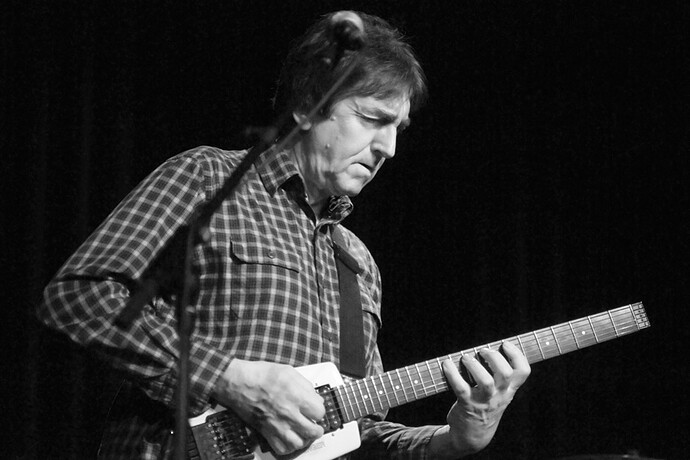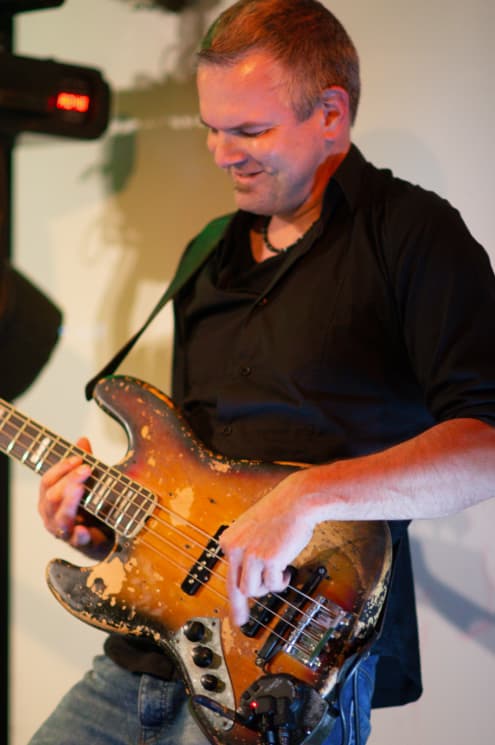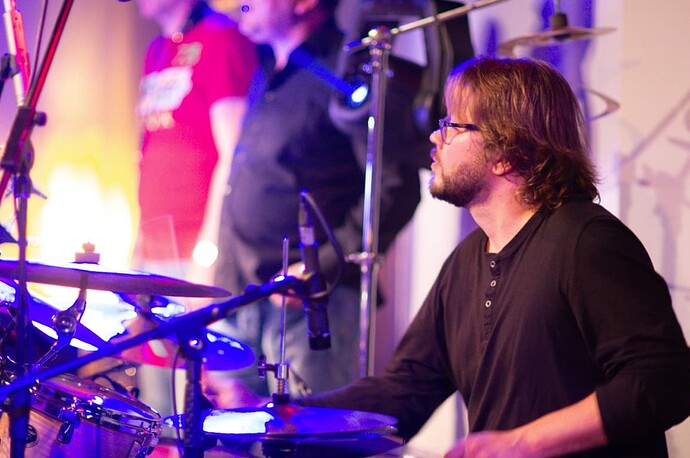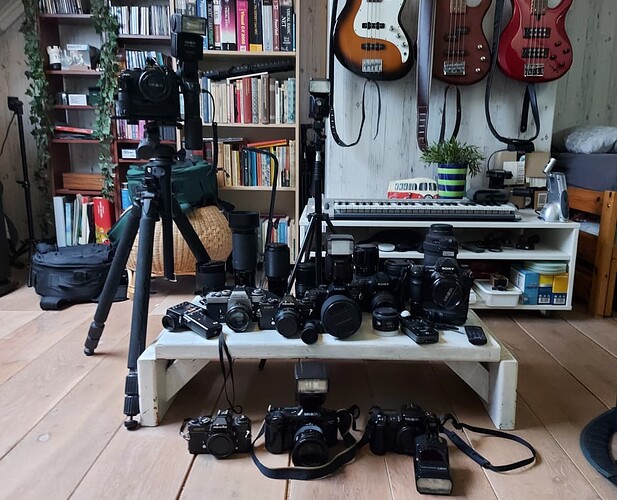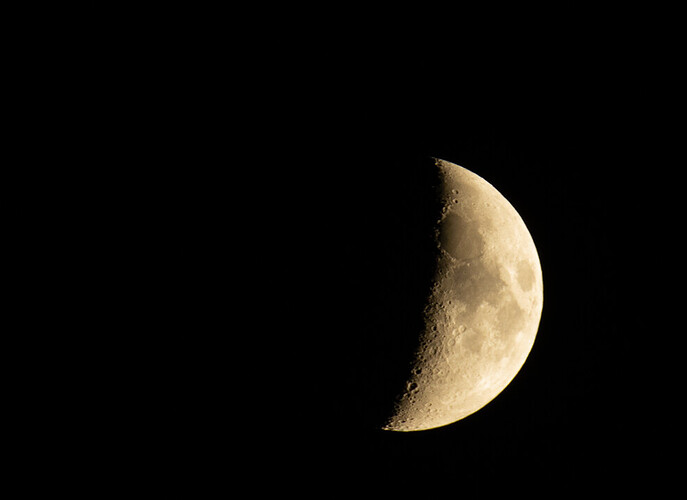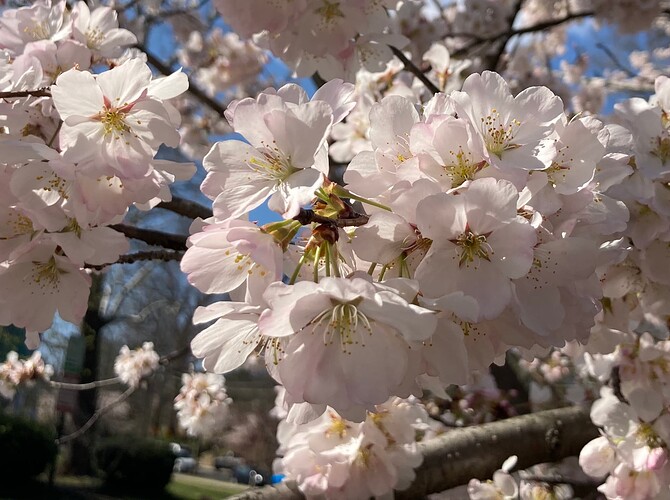Those are really good! I think I have a couple rabbits somewhere.
I have actually photographed a human being as well. Although most guitar players suspect that he was secretly from a different planet.
I like the one with the bottle a lot!
The dentist one makes me think of something like this: (at 0:55) The SIDH - Out of My Head (feat. SounDiver) - YouTube
Wait, there’s more! 
Frans Vollink. Look him up. STELLAR bass player.
Sebastiaan Cornelissen… quite a… “proficient” jazz drummer and composer. He and Frans are joined at the hip.
Sebastiaan is one of my best friends, and directly responsible for me getting back to playing the bass after almost four decades of hiatus.
Ah, the magic question. This is a very involved subject but there are two basic ways to compensate for the earth’s rotation. You can use what is called the 500 (or 400) rule or use a star tracker which actually follows the stars as they move across the night sky. You can also combine the two. Here is a video that explains it pretty well.
This is always a controversial subject on the Astrophotography forums and there are quite a few videos on YouTube about it. There are also a few other things to consider, for clear pictures, besides the exposure time such as the camera’s crop sensor type, camera sensor noise from heating on long exposures, and the ISO rating used, just to name a few.
Here is another video from Nico’s site that may be of interest in what you can accomplish with a minimum of expenditure.
The system on your telescope is called a go to system and is used typically so that the novice star watcher can find and track a star, or other object in the sky. I would rather save the money and use a standalone camera star tracker that is designed for this purpose. Goto systems still require proper polar alignment to work properly, which confuses and frustrates a lot of people. ![]()
I have a Celestron 6" reflector telescope and the adapters for mounting my Canon DSLR to it but would rather just use my stock DSLR, Tripod and intervalometer. Less gear to set up.
Thank you, @Celticstar - I will check out these two videos tonight!
You are correct. You need as much light as possible from your target and the only way to get that is with multiple images. In the case of the Andromeda galaxy shot there were 180 separate images, of which only 170 were usable due to an airplane that decided to fly through the field of view ![]()
Yes there were 180 images, of which 170 were acceptable, which were then stacked together using free software such as Sequator or Deep Sky Stacker.
Nico’s Nebula Photos site is very very good at explaining things. Trevor’s Astrobackyard site is more into the equipment end of things.
Astrophotography can be as simple or complicated as you want. Complicated gets expensive fast.
There is a lot of preparation before you take astro photos. First off what is visible at any given time for your location. I use Stellarium which is a well known free app available for phones/tablets/desk top computers. Some may ask why I shot the Pleides picture at 3:32AM the answer is because that was the best time available for taking the pictures from my back yard. I prefer taking pictures when my target is at least 30 degrees above the horizon. This helps cut down the light pollution I have to go through.
So what you’re saying is that GAS is not just for bass players?!?
@kristine : told ya so. ![]()
Apparently, we were not “a lot of people”. But I can see how a standalone camera tracker would be a lot more precise.
I’d also think it limits the atmosphere you have to peer through. There’s a reason why the moon is brightest when it’s right above your head.
Nice collection of cameras, @peterhuppertz ![]() . . . wow!
. . . wow!
I know. I should be ashamed… I insist that I’m not a collector; I’m a user. That’s my story and I’ll stick to it. 
Since this picture, I managed to get rid of one camera. Problem is, I replaced it with one I like better, so net gain: zero. But the good news is: I got 90 euros for the one I sold, and paid 30 euros for the one I replaced it with.
There is one more for sale, but apparently, this is not a seller’s market.
There are also a few cameras with which I have a special relationship – one was my mother’s, one was the first camera I bought, one was the first camera I bought new, one is the first camera I repaired myself, and one is a camera that many people frown upon, but is actually very adequate. This is all manual focus stuff
And then there’s autofocus. I have three, and I use only one of those. There is one I really want, but it’s made out of unaffordium.
And then there is digital. Only three. Two of these are in heavy rotation.
It’s when we get to optics where things get really obscene. With some effort, I can remember that I have twelve cameras (manual focus film, autofocus film, and digital). Oh no, wait. thirteen.
But ask me how many lenses I’ve got and the best answer I have is “too many”.
God, I’m sad. 
You are correct. Pollution comes in many forms. ![]()
Even so you still have to be careful. Most astrophotographers limit their maximum exposure time to about 3 minutes per shot. I do this and let the tracker run for another 3 minutes without taking a picture. This allows the camera’s sensor to cool down a little, which reduces sensor noise, and helps in post processing. I then recheck the target framing and take the next exposure if necessary.
I have about $6k in lenses (glass). My DSLR’s all have crop sensors. Last fall I looked into moving up to a full frame camera. I discovered that the older lenses I have for crop sensor cameras were not designed for full frame cameras so I decided to just stick to what I have for now. ![]()
